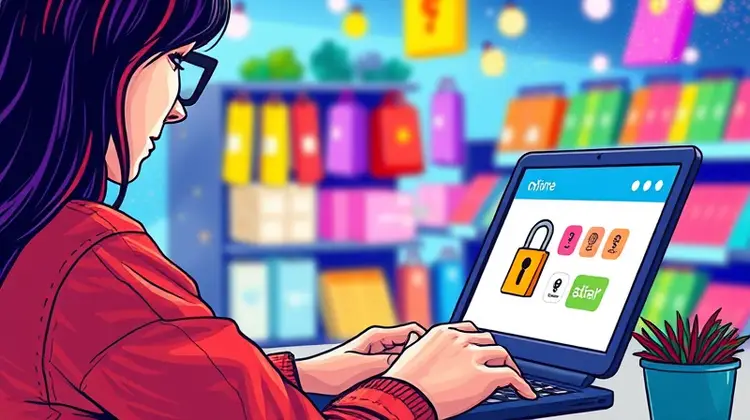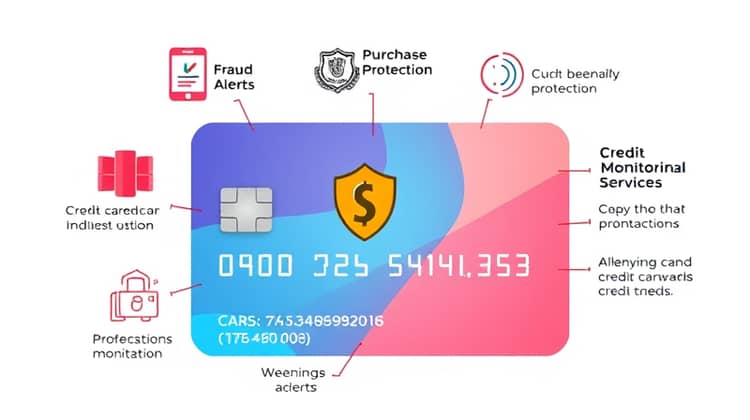In today's digital age, credit card security is more important than ever. With the increasing prevalence of online shopping and digital transactions, consumers are at a greater risk of identity theft and fraud. Protecting your credit card information is not only essential for your safety but also crucial for maintaining your financial health.
One data breach or unauthorized transaction can lead to significant losses, along with the headaches of disputing charges and restoring your credit score. By employing effective security measures, you can safeguard your financial information against potential threats.
In this article, we share ten essential credit card security tips that will help you protect your information and avoid falling victim to fraud.
Why Credit Card Security Matters

Credit card security matters because it directly impacts your financial well-being. In an era where online payments are the norm, the chances of your credit card information being stolen increase significantly. When thieves gain access to your card details, they can easily rack up charges on your account, leaving you to deal with the fallout.
Moreover, the repercussions of identity theft extend beyond just financial loss. Victims often find themselves dealing with damaged credit scores, increased insurance premiums, and the stress of potentially years of recovery. Therefore, it is essential to take steps to protect your credit card information before it's too late.
Investing time and effort into learning about credit card security is a small price to pay compared to the turmoil that can arise from fraud. By being proactive, you can enjoy the convenience of digital transactions without compromising your security.
1. Keep Your Card Information Safe

In the age of technology, it’s crucial to keep your credit card information safe from prying eyes. Whether you're shopping online or using your card at a physical store, it is imperative to adopt strict protocols to ensure your card details are secured.
- Use secure websites that encrypt your information during transactions—look for 'https://' in the URL.
- Avoid saving your credit card information on websites unless absolutely necessary, and ensure those sites are reputable.
- Do not share your credit card information via email or text message, as these channels are not secure.
By taking these precautions, you will significantly reduce the chances of your credit card information being compromised.
2. Use Strong and Unique Passwords

A strong password is your first line of defense against unauthorized access to your accounts. Many people underestimate the importance of creating unique passwords that are difficult to guess, often opting for easy-to-remember options that can be easily compromised.
Using common words or phrases, your name, or any easily obtainable information can put you at risk. Instead, create a password that includes a combination of uppercase and lowercase letters, numbers, and special characters. Change your passwords regularly and avoid reusing them across different platforms.
Finally, consider using a password manager to help you create and store strong, unique passwords for all your accounts, ensuring you don't have to remember them all.
- Create a password that is at least 12 characters long, mixing letters, numbers, and symbols.
- Avoid using easily guessable information such as birthdays or names.
- Change your passwords regularly and never reuse passwords across different sites.
By adhering to these password practices, you can highly enhance your account security, making it more challenging for potential fraudsters to gain access.
3. Enable Two-Factor Authentication

Two-factor authentication (2FA) requires an extra layer of security that significantly decreases the likelihood of fraud. With 2FA enabled, accessing your account is not solely dependent on just your password, as a second verification step is required before access is granted. This could be a text message, an email, or an authentication app.
Implementing 2FA on your financial accounts and any site where you store sensitive information can deter cybercriminals, as even if your password is compromised, they will need an additional piece of information that is much harder to obtain.
4. Monitor Your Accounts Regularly

Regularly monitoring your credit card accounts is an essential practice for maintaining security. By frequently checking your transactions, you will be more likely to notice any unauthorized or suspicious activities early on, allowing you to take immediate action if necessary.
Set aside time each month to go through your statements thoroughly, verifying each transaction against your records. Additionally, consider setting up alerts for transactions exceeding a specific limit, or for any transactions made without your direct verification.
- Review your account balances frequently.
- Set up notifications for any transactions made on your card.
- Immediately report suspicious activity to your bank.
Keeping a close eye on your accounts is a proactive way to catch fraud early and take steps to rectify any issues before they escalate.
5. Be Cautious with Online Transactions

While the convenience of online shopping is undeniable, it is crucial to exercise caution every time you make a purchase. Always ensure that you're logging into secure websites and don’t click on unverified links or advertisements that may lead to harmful sites.
Before completing any transaction, verify that the webpage is secure, which is indicated by a padlock icon in the address bar, and that the website's URL starts with 'https.' Always do your research on unfamiliar sites to ensure their legitimacy to avoid potential scams.
- Shop only on trusted websites with secure checkout processes.
- Avoid making purchases over public Wi-Fi networks.
- Always review return and refund policies before buying.
Staying vigilant while making online transactions will help decrease your risk of falling victim to fraud.
6. Be Aware of Phishing Scams

Phishing scams are prevalent and can take many forms, from emails claiming to be from your bank asking for account information to fake websites designed to imitate legitimate businesses. These scams often use social engineering tactics to lure unsuspecting victims into divulging their sensitive information.
Be skeptical of unexpected emails or texts, especially those requesting personal information or prompting you to click on links. Always verify the identity of the sender before responding or taking action.
- Look for signs of phishing, such as poor grammar and generic greetings.
- Verify links by hovering over them before clicking to see the full URL.
- Do not provide personal information in response to unsolicited inquiries.
By remaining vigilant, you can protect yourself from falling prey to these manipulative tactics.
7. Use Mobile Wallets

Mobile wallets provide an added layer of security for transactions by storing your credit card information securely and using advanced encryption technology. These digital wallets allow for contactless payments and often require authentication, which minimizes the risk of unauthorized access to your card information.
Adopting mobile payment solutions like Apple Pay or Google Pay not only eases your checkout experience but also ensures that your sensitive information is less likely to be compromised compared to using physical cards, especially since no actual card details are shared during transactions.
8. Limit the Number of Credit Cards You Carry

Carrying fewer credit cards can simplify your financial management and reduce the likelihood of losing or misplacing your cards. By limiting the number of cards in your wallet, it becomes easier to keep track of them and more manageable to monitor transactions associated with them.
Additionally, having fewer cards decreases your overall risk if one were to be lost or stolen, making it easier to monitor and respond to any potential fraud.
9. Report Lost or Stolen Cards Immediately

If you lose your credit card or believe it has been stolen, acting quickly is crucial. Prompt reporting gives your bank the opportunity to freeze your account and prevent any unauthorized transactions from occurring. Most banks provide 24/7 customer service for such emergencies, so don't hesitate to reach out as soon as you notice something awry.
Delaying action can lead to significant financial loss, as well as the cumbersome process of disputing fraudulent charges and restoring security to your accounts.
10. Know Your Credit Card’s Security Features

Familiarizing yourself with the specific security features that your credit cards offer can empower you to leverage these tools effectively. Many credit cards now include features such as fraud alerts, purchase protection, and credit monitoring services that can provide additional safety for your transactions.
By understanding these benefits, you can utilize them to enhance your overall security strategy, ensuring you're making the most of the protection available to you.
Conclusion

Protecting your credit card information is vital in today's digital landscape, where the risks of fraud and identity theft are ever-present. From maintaining strong passwords to being cautious during online transactions, the steps outlined in this article can significantly reduce your vulnerability to scams.
Taking proactive measures, such as monitoring your accounts and using secure payment methods, empowers you to take control of your financial security and minimize potential threats.
Remember that the responsibility of securing your credit card information lies not only with your bank or financial institution but also with you as the cardholder. Learning about and implementing these best practices should be an integral part of your financial habits.
With the right knowledge and vigilance, you can enjoy the benefits of modern banking without exposing yourself to unnecessary risks. Stay informed and regularly review your security practices to ensure they remain effective against evolving threats.














